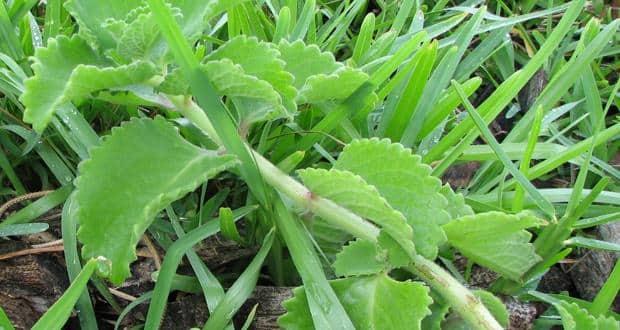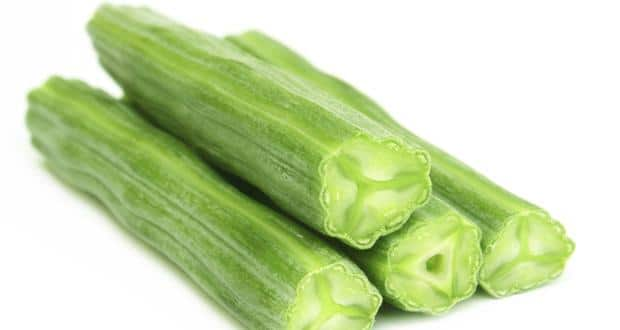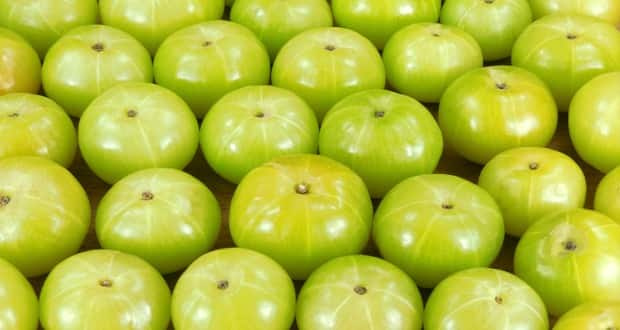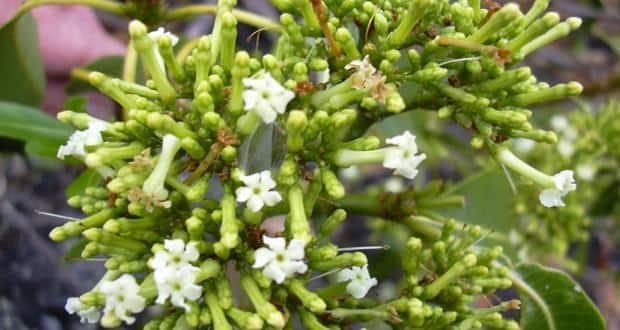Herbal remedies for hypertension
Hypertension is the condition in which the blood pressure increases
above the specified level of 120/80 mmHg. The 120 refers to the systolic
blood pressure or the pressure when the heart is actively contracting;
the 80 is the diastolic blood pressure or the pressure when the heart is
relaxed in between contractions. As any doctor will tell you, an
increase in the diastolic blood pressure is often more worrying because
it indicates the heart is not getting the rest it needs between
contractions; in turn, this can begin to interfere with the heart’s
ability to pump at a normal rate, leading to other cardiac problems.
Several herbs have been used in traditional medicine to treat
hypertension and here we present a few such remedies.
Garlic has been found useful in patients whose blood pressure is mildly elevated. It is believed that allicin in garlic increases the production of nitric oxide and this helps to relax the muscles of the arteries, reducing both the diastolic as well as the systolic blood pressure. To get the entire benefits of garlic, it is recommended that you peel and lightly crush the fresh garlic and consume it raw. However, garlic also has the property of thinning blood and this means the clotting ability of blood is reduced; so it is best to use garlic supplements only after you consult your doctor.
Coleus forskohlii is the Karpuravalli plant that is grown in many home gardens in South India. In research studies, it has been found to relax the smooth muscles of the arteries and this helps to lower blood pressure. It is also said to make the heartbeat stronger and slow down the pulse. Certain studies have evaluated the action of Karpuravalli tablets and chewable pills and found it helps reduce blood pressure in the elderly.

Obtained from the Moringa oleifera plant, drum sticks, called Sahjan in Hindi, are known for their high content of protein and valuable vitamins and minerals. Studies have found that extracts from the leaves of this plant help to reduce both systolic and diastolic blood pressure. The best way to harness this benefit is to cook drumsticks with lentils or dal.
Traditionally, the amla plant has been used to lower blood pressure. Recent studies have found that aqueous extracts of the leaves of the amla plant help to reduce diastolic and systolic blood pressure; amla extracts also show the ability to reduce levels of cholesterol in the blood and the liver and this could contribute to its antihypertensive action. It is believed that the vitamin C content of amla may also play a role in widening the blood vessels and this may help to reduce blood pressure. Amla is an important component of the Triphala mixture that is commercially available.

Radish- Also called mooli in Hindi, it is a common vegetable that is used in Indian kitchens and has been shown to have antihypertensive action. This action may be a result of the high content of the mineral potassium which helps to counter the BP-increasing effects of a high-sodium diet. Radish can be cooked as a stir fry dish or even better, be eaten raw in a salad or grated and mixed with yogurt to give a tasty raita.
In experiments, sesame or til seed has shown an ability to reduce both diastolic and systolic blood pressure. Sesame oil contains sesamin and sesaminol and these are believed to play a major role in reducing the oxidative stress in the body; this has an anti-inflammatory effect on the arterial walls, contributing towards a lowering of the blood pressure. Recent studies have found that combining sesame oil with rice bran oil helps to reduce blood pressure in hypertensive patients more effectively than taking anti-hypertensive medication alone.
 Traditional medicine practitioners have used Rauwolfia in treating
insomnia, snakebite, insanity and high blood pressure. The alkaloid
reserpine extracted from this plant was one of the first potent
treatments for hypertension. This helps to widen the blood vessels and
lowers the heart rate; both these effects ensure the blood pressure
stays low. Although both the root powder and tablets are available, it
is vital Rauwolfia is taken under the supervision of a doctor because of
its potent action.
Traditional medicine practitioners have used Rauwolfia in treating
insomnia, snakebite, insanity and high blood pressure. The alkaloid
reserpine extracted from this plant was one of the first potent
treatments for hypertension. This helps to widen the blood vessels and
lowers the heart rate; both these effects ensure the blood pressure
stays low. Although both the root powder and tablets are available, it
is vital Rauwolfia is taken under the supervision of a doctor because of
its potent action.
Flaxseed or linseed is rich in a compound called alpha linolenic acid that is one of the important omega-3 fatty acids. Several studies have found that people with hypertension who include flaxseed in their diet have lower levels of cholesterol and also exhibit a lowering of blood pressure.
THIS IS ONLY FOR INFORMATION, ALWAYS CONSULT YOU PHYSICIAN BEFORE HAVING ANY PARTICULAR FOOD/ MEDICATION/EXERCISE/OTHER REMEDIES.
Garlic has been found useful in patients whose blood pressure is mildly elevated. It is believed that allicin in garlic increases the production of nitric oxide and this helps to relax the muscles of the arteries, reducing both the diastolic as well as the systolic blood pressure. To get the entire benefits of garlic, it is recommended that you peel and lightly crush the fresh garlic and consume it raw. However, garlic also has the property of thinning blood and this means the clotting ability of blood is reduced; so it is best to use garlic supplements only after you consult your doctor.
Coleus forskohlii is the Karpuravalli plant that is grown in many home gardens in South India. In research studies, it has been found to relax the smooth muscles of the arteries and this helps to lower blood pressure. It is also said to make the heartbeat stronger and slow down the pulse. Certain studies have evaluated the action of Karpuravalli tablets and chewable pills and found it helps reduce blood pressure in the elderly.

Obtained from the Moringa oleifera plant, drum sticks, called Sahjan in Hindi, are known for their high content of protein and valuable vitamins and minerals. Studies have found that extracts from the leaves of this plant help to reduce both systolic and diastolic blood pressure. The best way to harness this benefit is to cook drumsticks with lentils or dal.

Traditionally, the amla plant has been used to lower blood pressure. Recent studies have found that aqueous extracts of the leaves of the amla plant help to reduce diastolic and systolic blood pressure; amla extracts also show the ability to reduce levels of cholesterol in the blood and the liver and this could contribute to its antihypertensive action. It is believed that the vitamin C content of amla may also play a role in widening the blood vessels and this may help to reduce blood pressure. Amla is an important component of the Triphala mixture that is commercially available.

Radish- Also called mooli in Hindi, it is a common vegetable that is used in Indian kitchens and has been shown to have antihypertensive action. This action may be a result of the high content of the mineral potassium which helps to counter the BP-increasing effects of a high-sodium diet. Radish can be cooked as a stir fry dish or even better, be eaten raw in a salad or grated and mixed with yogurt to give a tasty raita.
In experiments, sesame or til seed has shown an ability to reduce both diastolic and systolic blood pressure. Sesame oil contains sesamin and sesaminol and these are believed to play a major role in reducing the oxidative stress in the body; this has an anti-inflammatory effect on the arterial walls, contributing towards a lowering of the blood pressure. Recent studies have found that combining sesame oil with rice bran oil helps to reduce blood pressure in hypertensive patients more effectively than taking anti-hypertensive medication alone.
 Traditional medicine practitioners have used Rauwolfia in treating
insomnia, snakebite, insanity and high blood pressure. The alkaloid
reserpine extracted from this plant was one of the first potent
treatments for hypertension. This helps to widen the blood vessels and
lowers the heart rate; both these effects ensure the blood pressure
stays low. Although both the root powder and tablets are available, it
is vital Rauwolfia is taken under the supervision of a doctor because of
its potent action.
Traditional medicine practitioners have used Rauwolfia in treating
insomnia, snakebite, insanity and high blood pressure. The alkaloid
reserpine extracted from this plant was one of the first potent
treatments for hypertension. This helps to widen the blood vessels and
lowers the heart rate; both these effects ensure the blood pressure
stays low. Although both the root powder and tablets are available, it
is vital Rauwolfia is taken under the supervision of a doctor because of
its potent action.Flaxseed or linseed is rich in a compound called alpha linolenic acid that is one of the important omega-3 fatty acids. Several studies have found that people with hypertension who include flaxseed in their diet have lower levels of cholesterol and also exhibit a lowering of blood pressure.
THIS IS ONLY FOR INFORMATION, ALWAYS CONSULT YOU PHYSICIAN BEFORE HAVING ANY PARTICULAR FOOD/ MEDICATION/EXERCISE/OTHER REMEDIES.
PS- THOSE INTERESTED IN RECIPES ARE FREE TO VIEW MY BLOG-
HTTP:GSEASYRECIPES.BLOGSPOT.COM/
FOR INFO ABOUT KNEE REPLACEMENT, YOU CAN VIEW MY BLOG-
HTTP://KNEE REPLACEMENT-STICK CLUB.BLOGSPOT.COM/
FOR CROCHET DESIGNS
HTTP://MY CROCHET CREATIONS.BLOGSPOT.COM
FOR CROCHET DESIGNS
HTTP://MY CROCHET CREATIONS.BLOGSPOT.COM
Labels: Amla( gooseberry), drum sticks, flax seeds/alsi, Garlic, home remedy, hypertension, karpuravalli, radish, rauwolfia, sesame seeds/ til

0 Comments:
Post a Comment
<< Home